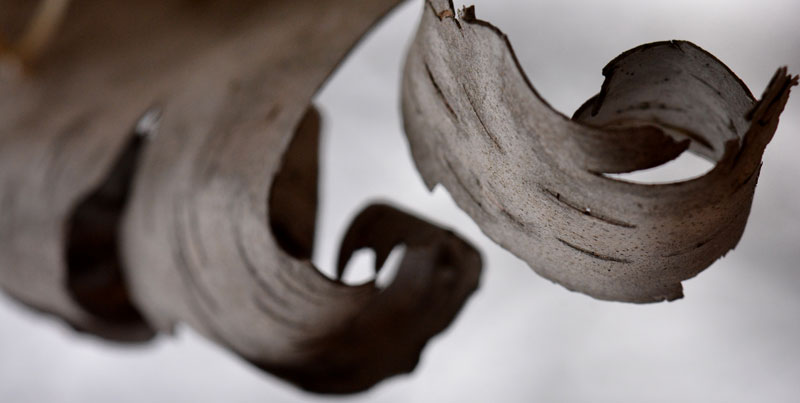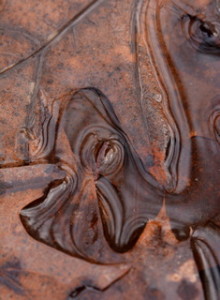
Insight Journal: The title of your course at BCBS this coming August is “The Convergence of Vedanā, Our Mammalian Physiology, and Awakening.” What do you mean by our mammalian physiology?
Brian Lesage: What I’m referring to, and what we’ll be talking about in this course, is our various physiological states. Stephen Porges talks about five states: social engagement, mobilization (fight-or-flight), play, immobilization (life-threat), and immobilization without fear. The state we’re in colors how we view our moment-to-moment experience. One point I really want to make right from the start is that all of these states are important and vital to how we relate to the world and others, and there is nothing inherently wrong with any of them. The difficulty comes only when a state arises at a time and in a way that isn’t congruent with the current environmental context or that leads to unskillful speech or actions.
IJ: Did you seek out this understanding of physiology and the nervous system, or did it find you?
BL: It found me. I had already begun teaching meditation and leading retreats, and my mentor at the time, Eric Kolvig, told me, “If you really want to teach meditation skillfully, you need to know how to navigate trauma and accumulated stress. Because that’s what arises, especially on retreat.”
He had seen that people with accumulated stress or a background of trauma were sometimes not being met or supported in a skillful way while on retreat. I started the Somatic Experiencing® training because I wanted to learn the skills to support yogis in a different way. I very soon fell in love with this way of understanding experience and dealing with some of the more difficult parts of our lives. It became a way of being for me.
IJ: How can we apply all of this to our practice?
 BL: Two things come to mind. One is a different way of understanding and working with movements that arise during practice. The other is the importance of safety, because that sense of safety can be absolutely vital for practitioners. To enter into meditation in a way that’s effective – combining qualities of both sati (mindfulness) and samādhi (the mind being collected) – I need to feel safe. If I’m going into a very still, quiet place and I’m feeling a sense of threat, those are the conditions that can lead to the threat response being activated and going into either high sympathetic arousal or freeze. These correspond to either the mobilization of fight-or-flight, which can be experienced as fear/panic or anger/rage, or the immobilization connected with life-threat which can be experienced as shutting down or helplessness.
BL: Two things come to mind. One is a different way of understanding and working with movements that arise during practice. The other is the importance of safety, because that sense of safety can be absolutely vital for practitioners. To enter into meditation in a way that’s effective – combining qualities of both sati (mindfulness) and samādhi (the mind being collected) – I need to feel safe. If I’m going into a very still, quiet place and I’m feeling a sense of threat, those are the conditions that can lead to the threat response being activated and going into either high sympathetic arousal or freeze. These correspond to either the mobilization of fight-or-flight, which can be experienced as fear/panic or anger/rage, or the immobilization connected with life-threat which can be experienced as shutting down or helplessness.
This is especially important for people with particular trauma symptoms, which sometimes go unnoticed in meditation communities. We need different ways of understanding these symptoms, so that the practice can deepen and not become stuck or scary. This includes understanding how to work with these states by offering a balance – both the balance of a well-regulated nervous system and the balance provided by being able to experience pleasant states. We need a way to experience and come back to pleasant physiological states and joy to offer a container in which these difficult states can arise and not be overwhelming.
The Buddha, I think, had an awareness of this. Although there wasn’t the understanding of the physiology we have today, he understood that wholesome pleasure is vital for stabilizing the mind and body. The Buddha invited and strongly encouraged an orientation toward wholesome pleasure as a way to begin our practice. Where does he begin so many of his teachings? Generosity. And why does he begin with generosity? Because it provides a wholesome experience of pleasure that creates in the physiology and in the mind the causes and conditions that support practice and the path to awakening.
IJ: Could you say more about this connection?
 BL: When generosity is engaged in and really connected with, it’s an amazingly pleasurable experience that’s also connected with the wholesome, and maintaining access to pleasant experience is especially important when trauma symptoms arise.
BL: When generosity is engaged in and really connected with, it’s an amazingly pleasurable experience that’s also connected with the wholesome, and maintaining access to pleasant experience is especially important when trauma symptoms arise.
There’s also what the Buddha called the bliss of blamelessness – this engagement in sīla (ethical conduct). Again, there’s an orienting toward wholesome pleasure. And when the Buddha talks about meditation, he talks about the pleasure of samādhi. But I can’t orient toward pleasure if I don’t feel safe. If I’m experiencing a real or imagined threat, identifying the threat is more important than feeling pleasure. When I feel safe, on the other hand, I can allow pleasure in. They go hand in hand. You could say that pleasure is one gateway into being with whatever arises. But then there’s also the danger of seeking pleasure as a way to avoid, rather than be with, whatever is arising. It’s a fine art.
IJ: Would you say it’s not enough to live an ethical life, but that it’s somehow essential to also find joy in living an ethical life?
BL: Yes, because it’s possible to lead an ethical life and still be miserable. That’s the amazing thing about the Buddha’s teaching – the encouragement to actually enjoy the blameless life – to train the heart and mind to notice the good that you’re doing. All of that lines up with the practice of cultivating samādhi, which is also a pleasant activity that is a fine art. Samādhi can be challenging, and sometimes it can take years to settle into the body and find a sense of pleasure in the collected mind. But that pleasure is deeply important.
IJ: For a lot of people, one gets the sense that meditating feels kind of like eating your vegetables – something that’s good for you, but mostly unpleasant.
BL: Some vegetables we love, maybe even crave, and others we might dislike and find aversive. It’s just like practice – cultivating what is nourishing leads to a healthier life, be that physically or spiritually. It’s tricky because you want to invite people to explore pleasure, but you also know that many, especially on retreat, are not going to experience much of that. Then people can go into shame spirals around not doing it right. And if you’re not experiencing a sense of pleasure, you might start to desperately want it, which is just a bummer. It’s part of the reason why all of this is such an art. Generosity and ethical conduct train the mind to savor pleasure in a way that’s not entangled with clinging, but based on letting go – all of which helps lay the groundwork for savoring samādhi. And of course there are other things that lay the groundwork, such as spiritual friendship in the form of connecting with some kind of community.
IJ: Especially when people are being introduced to meditation, there isn’t always a lot of talk about joy and pleasure. Some come away with the sense that it’s all about putting yourself through daily sittings and periodic retreats, whether you are enjoying any of it or not.
BL: In the Middle Length Discourses (MN89) there’s this exchange between King Pasenadi and the Buddha in which the King comments on how the monastics of the Buddha are always smiling and cheerful, living at ease and unruffled. I think this points to some of these things we’re talking about. This is one reason why I’m so excited about offering this course in August at BCBS, because it will allow us to come together to study and practice this physiology piece in conjunction with Buddhist practice in a way that I have found incredibly transformative. That is, exploring practice with an established physiological foundation of access to the pleasant.
IJ: It sounds like one of the major benefits of learning about these systems is finding different ways of becoming familiar with the nervous system and allowing it to guide us, instead of letting the mind dictate the direction and pace of practice.
BL: One frame that’s been very helpful for me is just knowing that when the threat response gets ignited in some way it’s going to send off a bunch of signals and flood my body with chemicals. I need to know that those chemicals in my bloodstream are going to take a while to break down and flush through. If I understand that, I can give space for this activation to move through. In a way, this knowledge allows me to be more patient with these types of experiences, and just let the body do what it knows how to do without adding other stories to it.
In the August course, we’ll be talking about and practicing being guided by the body. We’ll also explore understanding when the physiology gets dysregulated and starts doing the same things over and over, which sometimes gets us stuck. We’ll be looking at how to allow that looping to resolve so that our practice can continue to deepen. This includes access to pleasure, titration, orienting, and understanding the movements that arise.
IJ: It seems like this understanding of physiology also allows for a broader array of skillful options, instead of just sitting and noting. What other tools have you found useful?
BL: One thing is really being able to foster and experience how settled the body can be, and how being settled in that way can support a deeper practice. Another is becoming sensitive to when our physiology is moving toward becoming overwhelmed by experience, and intervening earlier in the process. A deep understanding of this piece, I think, is essential for both practitioners and teachers.
IJ: What does being overwhelmed look like or feel like? Are there specific markers, or is it more a general sense?
BL: I try to keep it as simple as possible. There’s one definition that I heard from my Somatic Experiencing® teacher, Steve Hoskinson: “Overwhelm is the loss of observer,” or the loss of our capacity to clearly observe. One place I’m able to notice this is in the quality of a story as it’s arising in the mind, and the feeling in the body that’s accompanying that story. For example, sometimes a story or thought can feel like a freight train, and I can just become completely lost and can’t get off that track. Maybe the thought or story has such a strong emotional quality of fear or anger or a sensation of churning in the torso that I can’t remain mindful. If I try to label ‘thinking’ or ‘planning’ or ‘worrying’ or try to come back to the breath or feel it in the body, the mind keeps getting lost in it the very next moment.
When that happens over and over and over, it’s probably time to try something different. To put it another way, and to keep it simple for now, being overwhelmed is an experience that overpowers mindfulness and keeps mindfulness from reestablishing itself.
IJ: What can practitioners do when they feel like they’re beginning to get overwhelmed? Is the general instruction to just step back and allow enough space for whatever it is – images, memories, physical sensations – to simply work through on their own?
 BL: Wouldn’t it be great if it worked like that all the time? When you start to get into the realm of being overwhelmed by experience, you will likely need different strategies. What I’ve discovered through my training and practice is the validity of the idea that trauma is unintegrated resource. There are aspects of every experience that can help navigate that strong pull into overwhelm. This topic all by itself could be a whole other interview! And as I mentioned before, cultivating a relationship with pleasant experience is important for navigating these states successfully.
BL: Wouldn’t it be great if it worked like that all the time? When you start to get into the realm of being overwhelmed by experience, you will likely need different strategies. What I’ve discovered through my training and practice is the validity of the idea that trauma is unintegrated resource. There are aspects of every experience that can help navigate that strong pull into overwhelm. This topic all by itself could be a whole other interview! And as I mentioned before, cultivating a relationship with pleasant experience is important for navigating these states successfully.
Another strategy from somatic modalities for working with this sense of overwhelm is the idea of titration. If you were to mix large amounts of a base and an acid together, you’d get an explosion. But if you take one drop of an acid at a time and put it into the base, it’s not going to explode. You can add a large amount of acid into a base, as long as you do it slowly.
In the same way, we want to titrate the experience, the level of activation – to slow down the process to keep it from overwhelming the system. In other words, we want to slow down the process in order to cultivate more capacity to be with what’s going on. Now, titration is going to look different for each person. Practicing mindfulness of the body is one way to increase the capacity to be with what’s arising. For some experiences, it’s possible to maintain the ability to clearly observe. For other experiences, however, that’s just not going to do the job. Offering practitioners other ways of navigating these types of experiences can sometimes get overlooked in meditation circles, which can then lead to self-blaming around not having the “skill” or “depth of practice” to simply sit with experience. That misses the mark.
So it’s a little more complex than just “being with it” because sometimes “being with it” is going to be too overwhelming. That might be the most important piece that this model brings to the vipassanā world. Sometimes we need to step away from an experience in the service of being with it. The real art for all of us is training ourselves to see that our physiology has become dysregulated – without judging ourselves or our experience or thinking that there is something “wrong” with us – and that there are alternative ways of navigating that dysregulation.
IJ: What does titrating an experience look like in meditation practice?
BL: When I’m meditating, if there’s a strong worry or a strong fear that has that freight train quality to it, a lot of times I’ll broaden my awareness to the entire body instead of just focusing on where I feel the activation. So the experience is titrated because there is a larger pool of awareness. Of course, this is just what works for me, and different things are going to work for different people.
 Simply opening the eyes can also help. I might meditate with eyes open for a while, then close them and be with whatever it is for some time. When it gets to be too much, I’ll open them again. Opening the eyes frontloads a different process in the nervous system – orienting to the here and now through the eyes, which for most people is the dominant sense. Taking some time to move my head and my neck and looking around to activate this orienting system – to see what’s around me – can also sometimes help modulate the activation in the nervous system.
Simply opening the eyes can also help. I might meditate with eyes open for a while, then close them and be with whatever it is for some time. When it gets to be too much, I’ll open them again. Opening the eyes frontloads a different process in the nervous system – orienting to the here and now through the eyes, which for most people is the dominant sense. Taking some time to move my head and my neck and looking around to activate this orienting system – to see what’s around me – can also sometimes help modulate the activation in the nervous system.
When I have my eyes closed, whatever is going on in the body is going to be accentuated. I can take a break from that by opening the eyes. Bringing my awareness out and in and out helps cultivate some form of modulation. All of this is in the service of creating a bigger container to allow things to move through, instead of becoming overwhelmed.
I should emphasize that if there is a history of trauma, and if the nervous system has become dysregulated, having a skilled practitioner or body-based therapist to work with can prove invaluable. Seeing our own patterns can sometimes be nearly impossible. A skilled therapist can help track these activation/deactivation cycles and the physiology in a way that supports resetting the entire system.
IJ: It seems like we all somehow find partners or teachers or bosses or coworkers to recreate certain relationships. Is this all about reenacting a certain situation until it’s done correctly or successfully?
BL: Certain overwhelming experiences can have a repetitive quality to them, and there are different views about the nature of this repetitive quality. One view found in some somatic modalities is that there are threat responses that began at some point in a stressful situation and didn’t get a chance to complete. There can be a compulsion to complete these responses, and the compulsion often expresses itself in unskillful ways. The system then tries to set up one’s environment so as to allow these responses to complete, which will allow the system to settle again.
A classic example comes from the trauma researcher Bessel van der Kolk. A Vietnam veteran who had been arrested for trying to hold up a liquor store was referred to him by the police department. Dr. van der Kolk noticed that every year on July 3rd, if he wasn’t in jail, this man would hold up a liquor store – not with a gun, just with his hand in his pocket. The cops would come and surround him, and he’d get thrown in jail.
Dr. van der Kolk discovered that on the night of July 3rd this man was in Vietnam with a buddy who was shot and killed. The next morning he was rescued by helicopters, but he still had a compulsion to work through or renegotiate this traumatic experience. His system was trying to unconsciously reenact a situation where he was literally surrounded by people with guns. From one point of view, his actions could be seen as an attempt to renegotiate the experience so that it could have a different ending – an ending that felt “complete.”
IJ: Why would it be so important for the response to complete itself?
BL: Because until it completes it’s going to keep on activating the system in a way that’s not helpful. You could say it’s keeping the system on guard or checked out, so the system continues to think there’s a threat when there’s not.
IJ: Until it finishes whatever response had begun, and deals with that threat in whatever way it needs to.
BL: Exactly. In Peter Levine’s Somatic Experiencing (SE) language it would be that it “completes” in a way that allows the system to return to a more coherent and sustainable place. The system is looking for a sense that “it’s over, I’m safe now.”
IJ: Can you give an example of what this would look like in our meditation practice?
 BL: I recently spoke with a practitioner who was experiencing bodily movements that were accompanying the experience of strong pīti (rapt attention). Many teachers would associate these bodily movements with the arising of pīti, since they fit the classic description of bodily movements that sometimes arise with strong, unbalanced pīti. Yet this practitioner noticed that the bodily movements were repeating over and over in a stuck kind of way. Since the practitioner was familiar with the physiological understanding of threat response and incomplete motor programs, he was able to be with the movements in a way that allowed them to, in SE terms, complete. This happened over the course of one long sit, after which the movements shifted, and a new level of concentration was available. It all comes down to what we’re doing with vipassanā, which is simply being mindful, only with a bit of a broader frame to support the ability to be present with what arises without endless reenactment.
BL: I recently spoke with a practitioner who was experiencing bodily movements that were accompanying the experience of strong pīti (rapt attention). Many teachers would associate these bodily movements with the arising of pīti, since they fit the classic description of bodily movements that sometimes arise with strong, unbalanced pīti. Yet this practitioner noticed that the bodily movements were repeating over and over in a stuck kind of way. Since the practitioner was familiar with the physiological understanding of threat response and incomplete motor programs, he was able to be with the movements in a way that allowed them to, in SE terms, complete. This happened over the course of one long sit, after which the movements shifted, and a new level of concentration was available. It all comes down to what we’re doing with vipassanā, which is simply being mindful, only with a bit of a broader frame to support the ability to be present with what arises without endless reenactment.
IJ: How do some of these SE concepts and approaches fit with the Buddhist tradition?
BL: There are some pretty interesting correlations. For example, the narrative of samsāra offers the perspective that we are wandering through this repetitive cycle of suffering, and the spiritual path allows us to step out of samsāra and into liberation. The Buddha describes samsāra as being without beginning, and – as long as we’re lost in reactivity – endless as well. In one discourse, the Buddha likens samsāra to a dog tied to a stake, and the dog is just running around and around and around (SN 22.99).
Have you noticed how much of our dukkha feels like this? It feels vast. It has a feeling of being both beginningless and endless. It can feel so damn repetitive, like we’re going around the same old stake on that leash again and again and again. And what an inspiring practice we are engaged in – putting an end to running around some stake on a leash, both individually and collectively. It’s a beautiful offering to the world we live in.